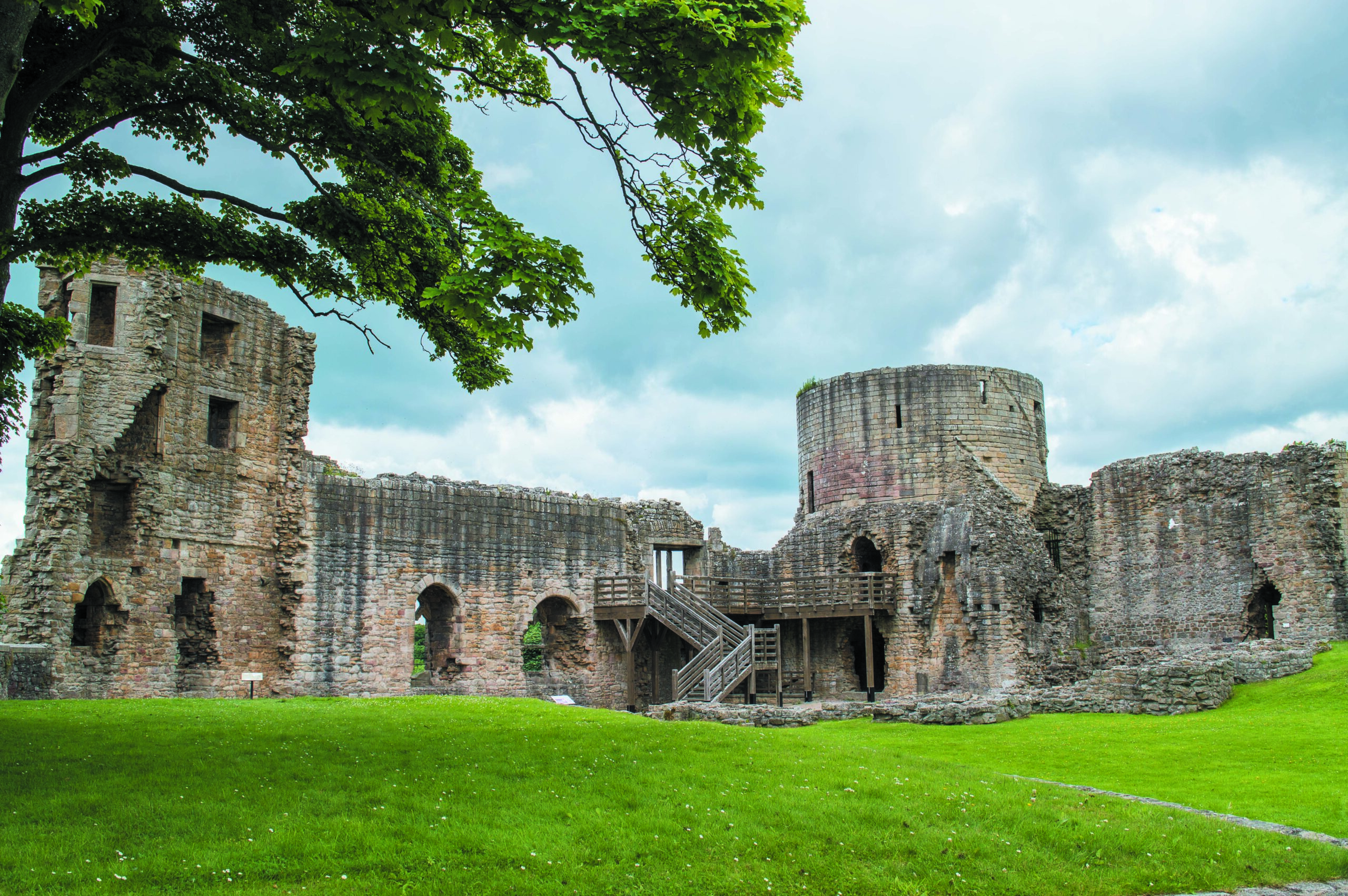Barnard Castle

Barnard Castle Details
Barnard Castle is an impressive multi-warded castle starting as a ringwork and bailey, continually upgraded and extended to the mid 15th century, after which it declined. It is open to the public as a tourist attraction.
- Closest To: Barnard Castle
- Access: Chargeable Public Access
- Grid Reference: NZ049164
Barnard Castle is a large castle founded in the early 12th century at the top of steep river cliffs overlooking the River Tees to the west, overlooking a steep sided gully to the north. It was founded in the reign of Henry I by Guy de Balliol, a baron who had been granted the lands by King William Rufus. It is an impressive ruin open to the public as a visitor attraction through English Heritage.
Guy de Balliol’s castle was a ringwork – a substantial circular earthwork bank created from the upcast materials of a ditch, and defended with timber walls. The level area within was about 50 metres across, and contained a large timber hall and outbuildings. This was strengthened between 1125 and 1140, when the ditch was substantially enlarged, and the timber wall replaced by a multangular stone wall, with a tower facing east, and a new gate tower, later absorbed into a larger tower. A small rectangular keep was then constructed at the north-east corner. Three new wards were added to the south and east, defended with earth and timber; a Middle Ward to the south of the gatehouse of the ringwork, which acted as a barbican area, the Town Ward, laying to the east of this barbican and the old ringwork, and the Outer Ward, which stretched to the south and was accessed from the town. Between 1140 and 1170, these outer wards were fortified in stone, and this included the construction of three new gatehouses, as well as the substantial Brackenbury Tower. Between 1170 and 1185, the timber buildings of the Inner Ward were rebuilt in stone, and the old keep was replaced by a larger round keep. Between the new keep and the hall was the Great Chamber, and this now formed a large residence for the lords of the castle. Guy had been followed by his nephew Bernard (i) and he by his son Bernard (ii).
Bernard (ii) captured King William of Scotland mat Alnwick in 1174, and was followed by his cousin Eustace. By 1209, Eustace was dead, and his son Hugh was lord of Barnard Castle – he was loyal to King John and defended the north against the invasion by King Alexander II of Scotland in 1216, during which time the castle was besieged. In 1229, Hugh was succeeded by John (i) who became acquired rights to substantial lands in Scotland when he married Devorguilla of Galloway. He was a leading supporter of King Henry III and was captured with him at the Battle of Lewes in 1264. When he died in 1268, his estates passed in turn to his sons Hugh, Alan, Alexander and finally John in 1278. This John would eventually be crowned king of Scotland in 1292, and was dispossessed of all his lands by King Edward I in 1296. The castle was briefly held by the warrior-bishop of Durham, Antony Bek, and then to Guy de Beauchamp,. Earl of Warwick, in 1307. Subsequently the castle was held by the Beauchamps and then the Nevilles as earls of Warwick before eventually being claimed in 1471 by Richard Plantagenet, later King Richard III. During this time, the castle was repeatedly upgraded and repaired, but subsequently it was maintained as a royal fortress by keepers including the Bowes family. The castle was besieged in 1569 during the “Rising of the North” and was captured apart from the Inner Ward, which was eventually surrendered. The damage caused was never repaired, and the castle was sold by King James VI & I in 1603, and was already in ruins by the time of the Civil War, and indefensible. It was then allowed to decline until the 19th century, when it started to attract visitors.
English Heritage website for Barnard Castle
Become a supporter of my work to access a more detailed history